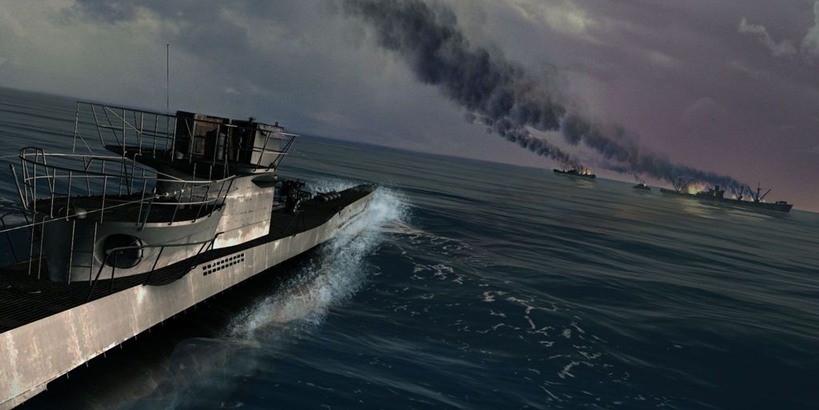Persistent design problems come close to scuttling a gripping tale of cat and mouse.
After several years of fairly generic shooters and strategy games based on the second world war, a more modern bent in gaming seems to have emerged: Call of Duty has enjoyed its greatest successes in a revamped format, whereas the Medal of Honour franchise has fallen slightly behind.
While the PC market suffered the same saturation as that experienced for consoles, the simulation niche has always been much smaller. Editions of Microsoft Combat Flight Simulator vie with IL-2 Sturmovik for air supremacy (both excellent games), and the Ubisoft series of Silent Hunter games has had a relatively unchallenged reign as king of the submarine simulation.
My first contact with a sub sim was my brother’s purchase of 688 Attack Sub on the Sega Megadrive. The player had the option of skippering the US 688 or the Russian ALFA in the same missions, an inspired touch which pumped up the sense of Cold War tension, even as the real conflict was drawing to a close.
A strange choice, especially considering the technological limitations of that time, was to display the ALFA’s controls in untranslated Russian. Although the buttons were mainly analogous to the American sub’s, my eight-year-old self still kept a Russian-English dictionary beside the bunk bed. This ubiquitous struggle to engage with the player is very much carried on in Silent Hunter 5.Simulation v alienationThere are certainly criticisms which stand from Ubisoft’s previous release, Silent Hunter 4: Wolves of the Pacific. The changed theatre of operations brought with it a hardcore simulation angle. As the fourth game’s visuals caught up with giant leaps in PC video card power, this Pacific instalment’s focus narrowed, to the extent that newcomers to war sims wept openly on to unintelligible keyboard overlays. An enthusiast’s spirit of schadenfreude persists. The manual and tutorial sections are still terrible and incomplete, so much so that a player can only get through a Finnish Sea-to-Kiel voyage by virtue of having a couple of games’ experience.
Should the player make it through the challenging tutorial section, SH5 does make a number of improvements. A timeline-based mission structure updates your boat’s capabilities and those of the British tubs over time. Scenarios are still a little open ended, employing victory conditions, where I would have preferred a leaner approach. The time compression mechanism, essential when travelling hundreds of miles by night, is often hard to access. It pops up on its own accord and can’t be accessed independently.
Where SH5 makes its greatest (broken) breakthrough is in interacting with the U-boat and its crew. The command interface now allows flitting between the map table and a first person, roaming view. Instead of a click between 2D sections during a battle to cut engines, load electric torpedoes and order damage control, the captain hurries through the sub, seeing its operations through his own eyes. The run button sees perhaps its first instance in a “sim” and the overall effect is incredibly impressive.
However, crew animation during the more tense moments needs improved. The captain’s subordinates are always fairly impassive and their movements don’t match the boat’s movements during surfacing, crash dives, or the hull being pummelled by depth charges.
The developer chose to tweak to one of the series’ more contentious concepts, the crew progress system. Previous instalments employed an experience system to award promotions and gauge a crew’s increasing efficiency over the course of the war. This has been overhauled, with a morale system obviously hoped to appease a sim player’s sense of accuracy. I could tell there was a slight decrease in my own crew’s performance, even as they earned plaudits. Despite this, the (limited) dialogue with crew members is stated as having an effect on their morale. I didn’t see any evidence of this but welcome the chance to interact, even in a limited way.
The cameras available when the boat’s conning tower breaks the water are excellent, and show off the handsome game engine. The sub’s interior is as cramped and gloomy as a HD remake of Das Boot, while the sounds of naval warfare are flawless if unchanged from previous games. The sim’s immersive quality is unbeatable in its field, or many others. Where the game fails, however, is in its indecent haste to remove the player’s training wheels. A little more hand-holding would do a lot to keep a new player’s attention, although at this stage in the series, this looks an unlikely addition.
Stronger Navy Field (Korean naval MMO)Weaker Battlestations: Midway (Arcade-style action)
